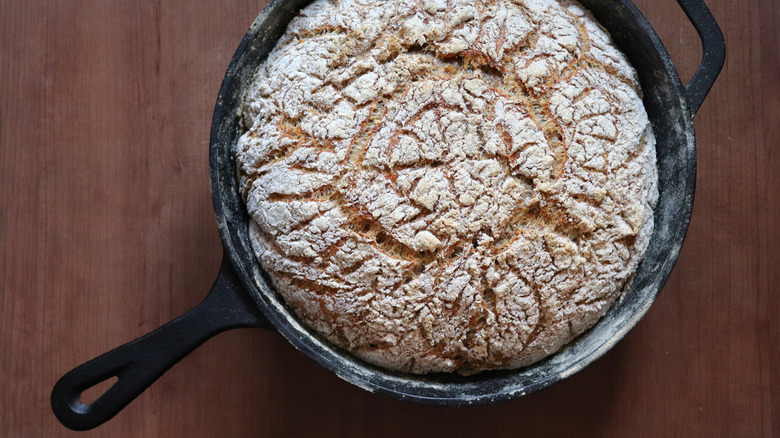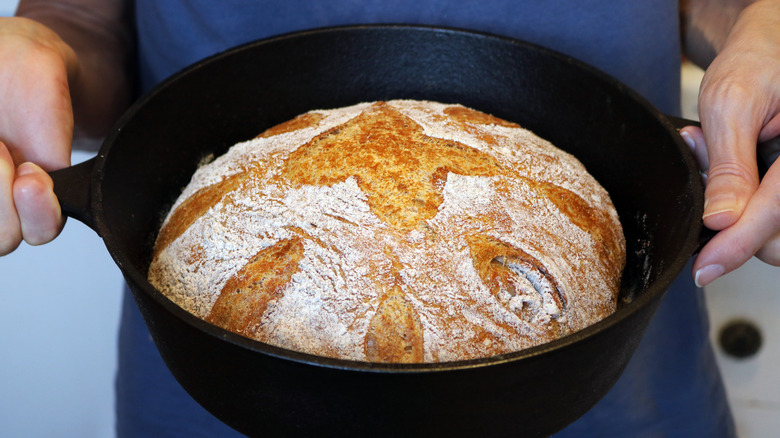Why Preheating Your Cast Iron Is Crucial For Successful Sourdough
Preheating cast iron is the secret to transforming your home oven into a sourdough bread haven. Nathan Myhrvold, the founder of Modernist Cuisine and lead author of the award-winning cookbook set "Modernist Cuisine: The Art and Science of Cooking," told Mashed why this tried-and-true technique is a bread-baking revelation. According to Myhrvold, cast iron bridges the gaps left by traditional ovens, especially regarding their poor heat retention, lackluster heat radiation, and subpar steam production.
Cast iron's low heat conductivity is a game-changer, stabilizing the temperature even when you open the oven door. Myhrvold emphasizes that "cast iron absorbs heat well and retains and radiates it even better," ensuring the steady heat essential for a perfect sourdough rise and crust. Moreover, the moisture in the dough, coupled with the pot's tight enclosure, creates the steam needed for that signature chewy, glossy crust. "This is hands down our preferred method for making crusty bread like sourdough at home," Myhrvold asserts. Preheating the cast iron vessel allows the dough to expand rapidly and evenly during the initial baking phase, delivering delicious results every time.
More tips for baking sourdough in cast iron
Preparing a loaf of rustic sourdough bread in cast iron isn't without its challenges. Handling a hot, heavy pot and moving the delicate dough into a deep Dutch oven, for example, can be quite daunting. Thankfully, Nathan Myhrvold suggests some practical solutions. Consider a combination cooker, what he calls "our favorite pot for baking bread." It is an affordable piece of cast iron cookware comprised of a Dutch oven and deep skillet that lock together. This design yields easy placement of the dough without deflating it or burning your fingers.
If you want to stick to a traditional Dutch oven, you may want to rethink using it for sourdough due to the difficulties they pose. However, Myhrvold advocates for a clever modification: baking the bread in the shallow lid. Preheat the base and lid separately by placing the base in the oven and heating the lid on a wire cooling rack with rolled-up kitchen towels. When ready, cover the dough with the upside-down Dutch oven and transfer it to the oven with extra thick oven mitts.
For a simpler method with an added layer of protection, Myhrvold recommends using a sheet of good ol' parchment paper. The cellulose-based material prevents the dough from sticking to the pot, ensuring a smooth release. Though the parchment may brown a bit during baking, it won't compromise your bread's quality. The resulting loaf will be perfect for sandwiches, bruschetta, French toast, patty melts, bread pudding, and other delights.

